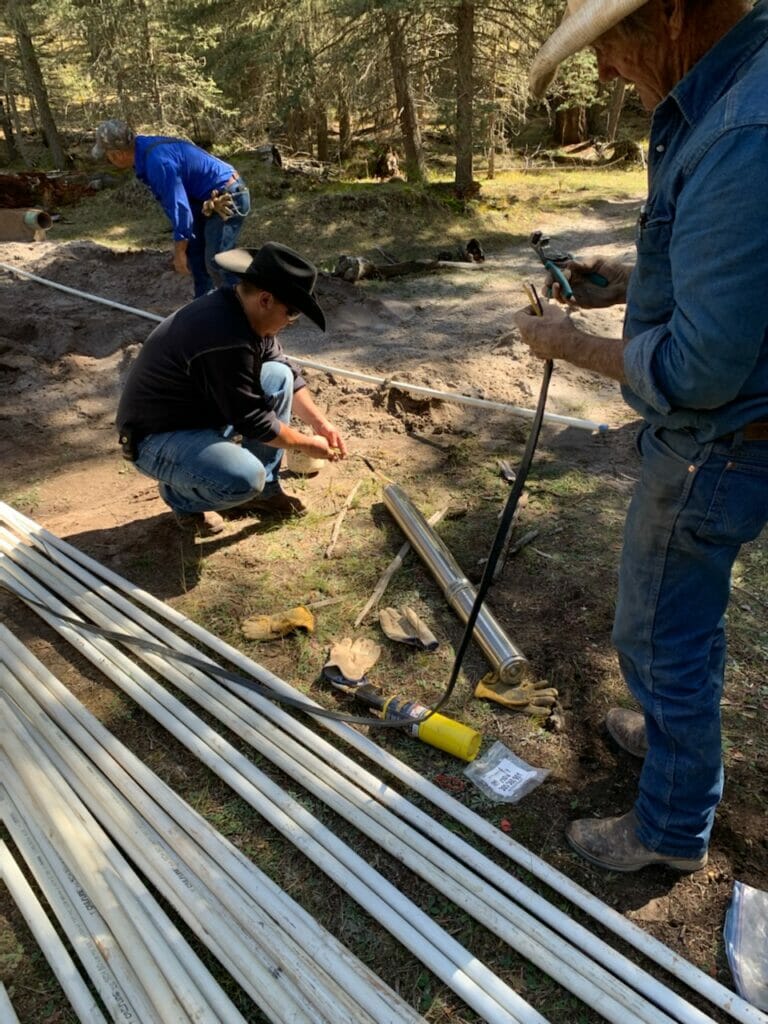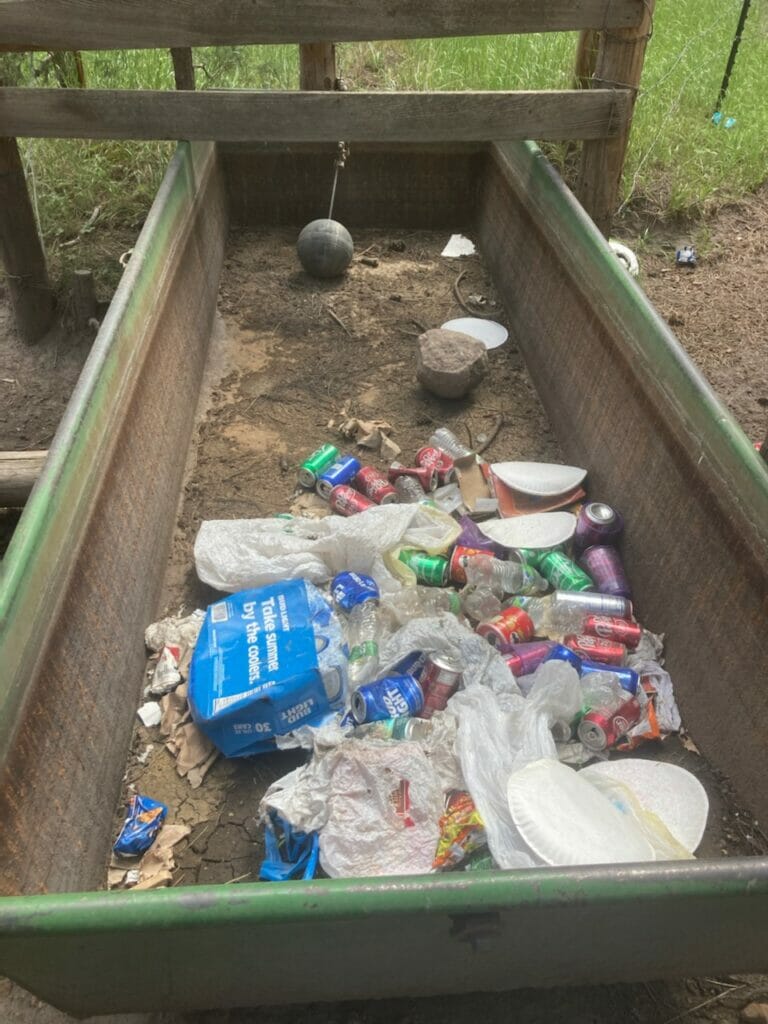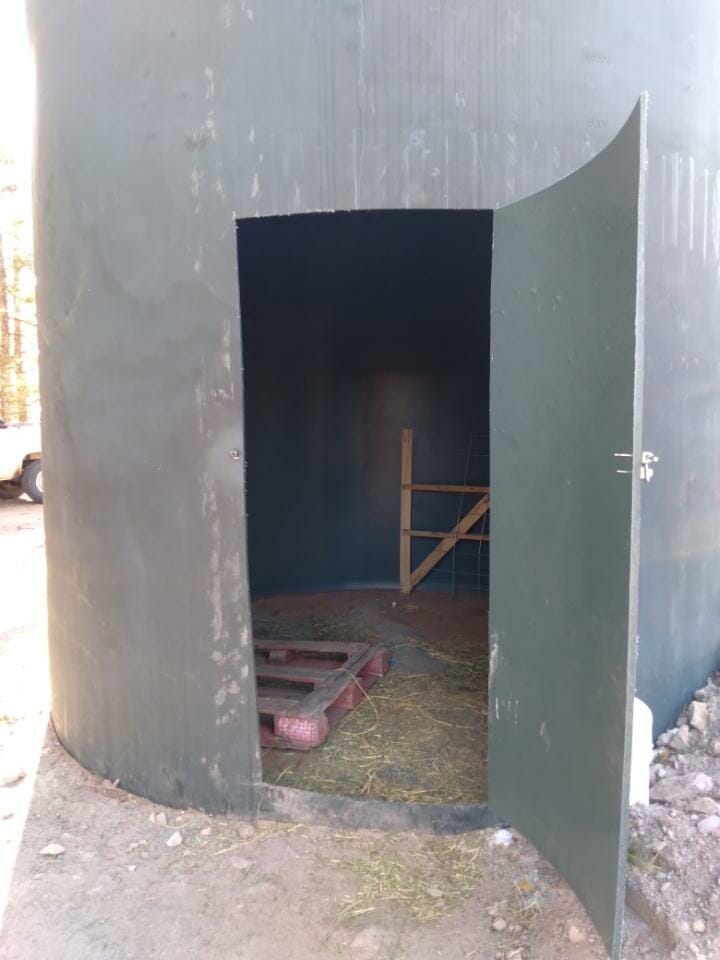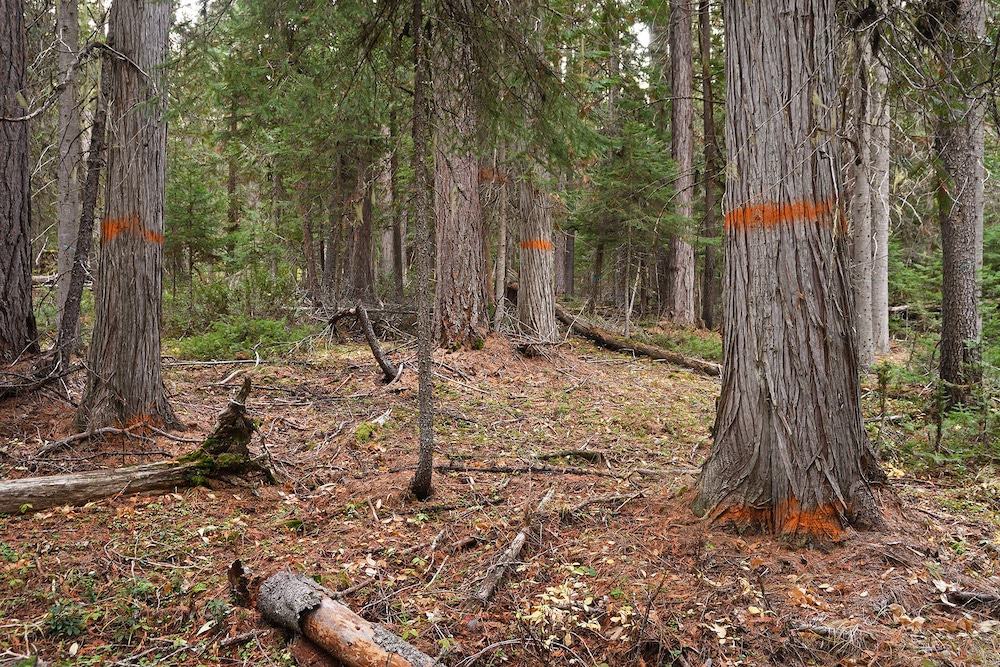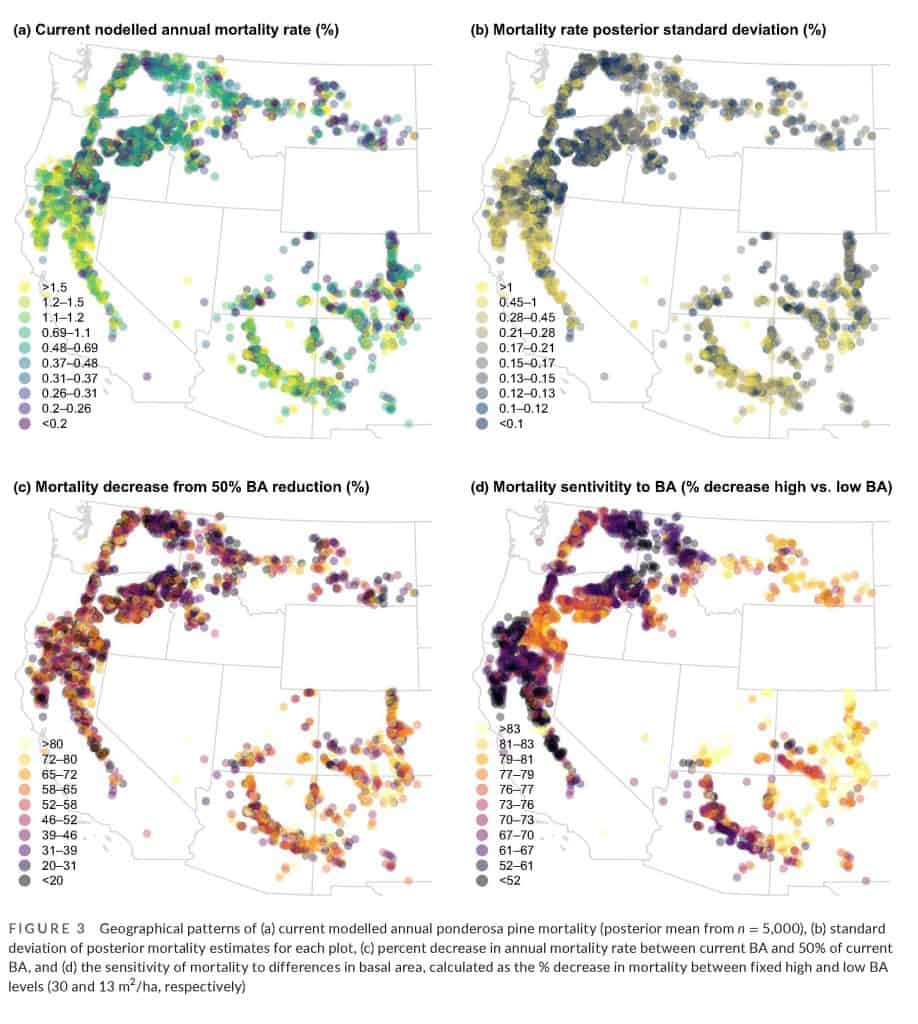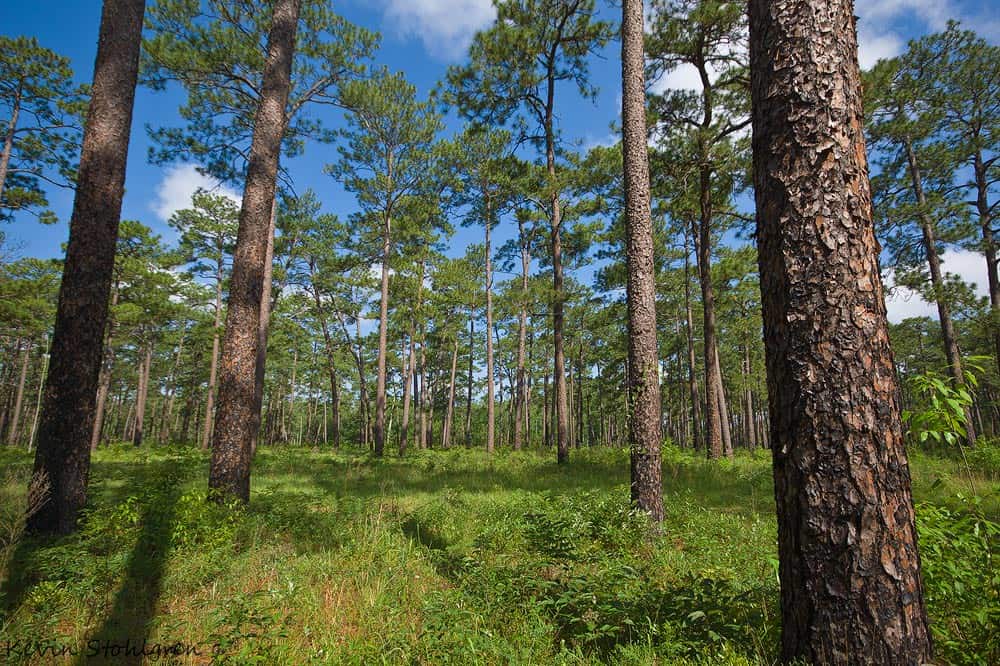I’ve been wanting to hear from stakeholders involved with 2012 planning processes. Many thanks to Sam Evans for taking the time to share his experiences. I’m sure this will lead to a great discussion! In addition to the specifics of this plan, we can reflect on the overall context of the 2102 Rule, as Sam says “This is also a make-or-break moment for the planning rule. Ten years in, there are no more excuses. The rule is not in transition any more. What the rule means here, now, is what it really means.”
**********************************************************************************************************************
Better intentions; fewer commitments
The Nantahala-Pisgah Plan Revision by Sam Evans
As the 2012 planning rule approaches its tenth birthday, another early-adopter is finally nearing the finish line. What does the Nantahala-Pisgah planning process tell us about whether we’re realizing the planning rule’s potential? Here’s a short history of a long process.
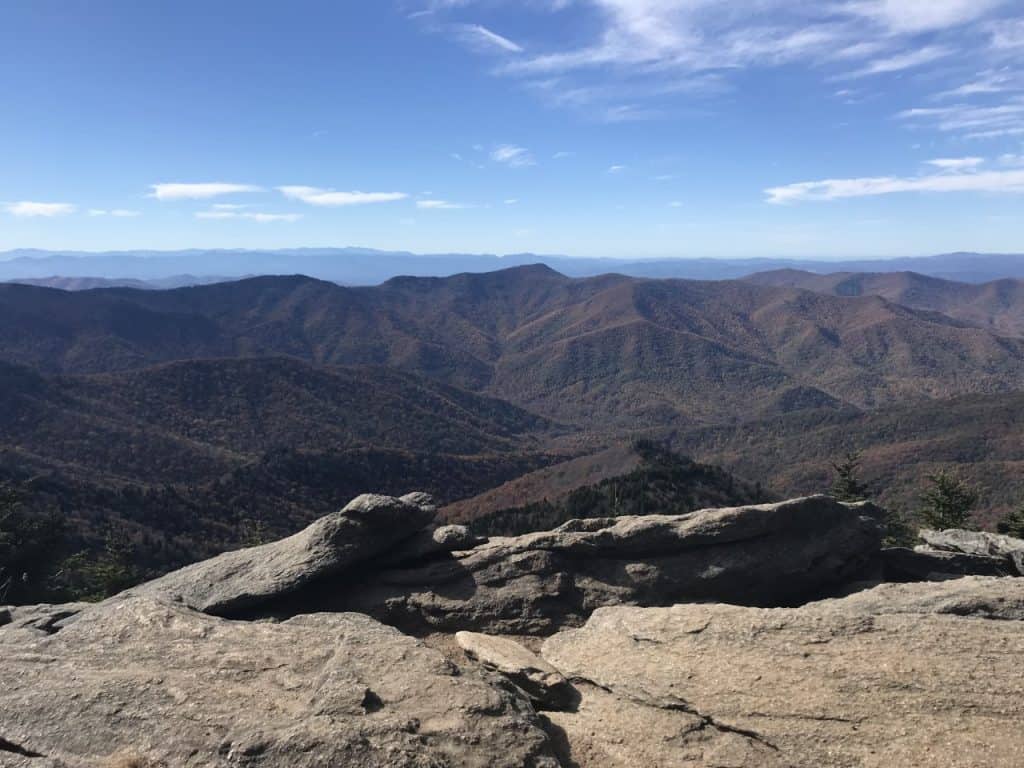
Background
The contiguous Nantahala and Pisgah National Forests in western North Carolina are the heart of the Southern Appalachian mountains. Managed as a single administrative unit, these forests are the third most visited in the National Forest System, and the most visited without a ski resort. The forests here are marvelously diverse and bewilderingly complex. A short walk can take you, ecologically speaking, the entire length of the Appalachian Trail, which incidentally passes through the area on its way from Georgia to Maine.
Ecosystems repeat in small patches, with more variation and texture than stanzas in a Coltrane improvisation. A few acres here and there, riffing across the landscape. Dry, fire-adapted forests intermingle with moist Appalachian coves, which are among the most diverse ecosystems outside the tropics.
Those moist and productive cove forests also grow valuable sawtimber. And, like other productive forests with big trees, they have tempted mismanagement and abuse. The Forests have been through at least two periods of unsustainable logging, once before Forest Service acquisition, at the turn of the 20th century, and another after, in the 1980s. There is plenty of work needed to restore degraded forests’ composition, structure, and processes. Still, much of the landscape is recovering well: pockets of old growth, disturbance-sensitive species, and backcountry areas large enough to allow for natural disturbance processes to resume.
These remnant and recovering conservation values have been a source of conflict. Much more often than not, projects have created a zero-sum choice between harvest and environmental protection. The Forests’ first plan, adopted in 1987 at the height of the timber wars, was remanded by the Chief before the ink was dry in response to protests to end rampant clearcutting and protect old growth.
The 1994 amended plan fared little better. Without public support for timber production, the agency shifted its rationale, pitching rotational harvest as a way to balance age classes for the benefit of wildlife. But the timber program itself didn’t change. Old growth, rare habitats, and unroaded areas were still scheduled for rotational harvest, and the agency dutifully attempted to implement the plan at their expense.
Attempted, but without much success. While the 1994 plan amendment promised up to 3,200 acres of timber harvest annually, the agency has been able to produce just a fraction of this, with recent averages around 750 acres each year. Even at low levels of timber harvest, at least some conservation priority areas have been prescribed for even-aged harvest in most projects under the 1994 plan, and the ensuing conflicts have been a tremendous drag on efficiency, resulting in wasted time and dropped stands. In fact, the Nantahala & Pisgah NFs have the highest rates of project-level attrition of any forest in the ecoregion.
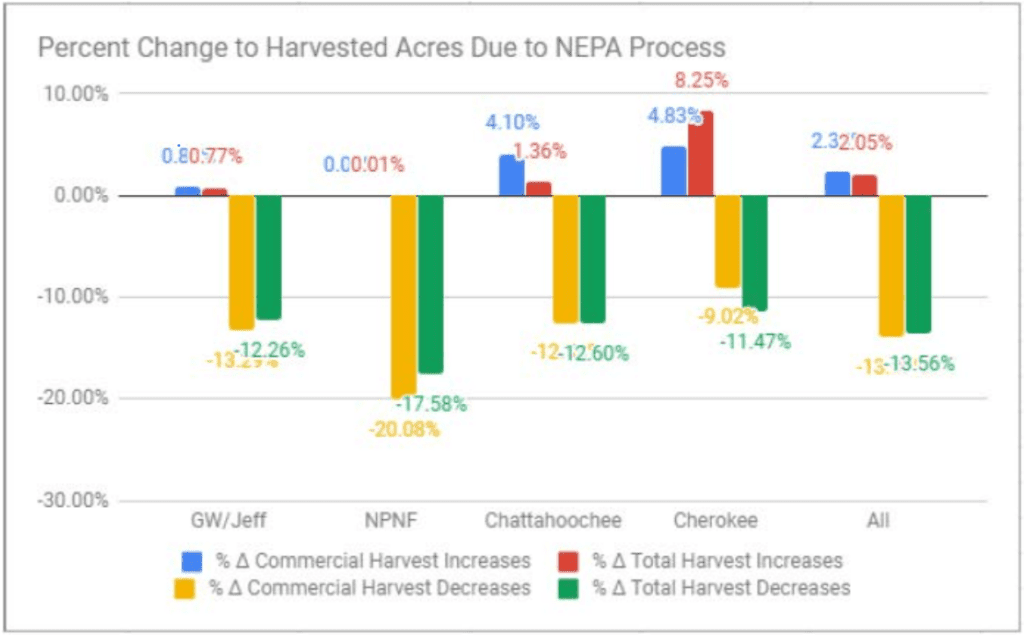
Fortunately, stakeholders have found better ways to work together. In some Districts, stakeholders built a shared, collaborative understanding of how timber harvest could be used to restore degraded systems. Capable agency leaders reflected their consensus at the project level and found new ways to fund important work that wasn’t always viable on its own. Although not uniformly, things got better.
This story, as unique as it felt to us locally, was happening in similar ways in different places across the country. Stakeholders were finding ways to transcend conflict. It was the right time to unveil the new planning rule, which sought to build on the insights earned in local laboratories: ecological restoration is a unifying goal, and consensus is the surest way to identify the highest priority restoration work.
The Nantahala-Pisgah Plan
Local stakeholders were so excited to put the planning rule into practice that they formed a planning collaborative in 2012, well before the agency kicked off its own process with a 2014 Assessment. While the process has not been without hiccups, the Nantahala Pisgah Forest Partnership has generated comments and recommendations with full consensus at each major step of the process including detailed recommendations on the Draft Plan in 2020. Full disclosure: I am proud to be a member of the Partnership, but I am speaking here only for myself.
The Partnership’s agreements cover every major issue from recreation to timber to recreation to wildlife habitat to wilderness. Without taking away from the importance of other issues, my focus here is on the ecological, social, and economic issues orbiting the Forests’ timber harvest program. The “where, how, and why” of logging were subjects of intense debate and compromise in the collaborative setting. The agency likewise spent most of its attention on goals that could be achieved through use of timber harvest.
The Partnership’s agreements were meant to be taken as a whole, and they recognized that management levels could increase considerably while also improving ecological outcomes if the Forest Service would commit to do the right kinds of things in the right places and provide safeguards for disturbance-sensitive ecological values.
The Final Plan, released in late January, purports to hit those targets:
Unlike the previous plan that framed activities in terms of outputs and traditional standards and guidelines, the revised plan developed desired conditions for each ecological community. By using ecological communities, projects will consider needs across a broader landscape, better enabling an increase in pace and scale of restoration.
Reader’s Guide at 5. The plan attributes these ostensible improvements to collaborative input, noting that collaborative stakeholders “created innovative approaches and processes” that “helped to create a more fully implementable plan.” FEIS App’x H at 12.
If only the plan content lived up to those intentions.
Does the Plan prioritize ecological restoration?
First, and crucially, the Plan does provide detailed, well-supported desired conditions for each ecological community, or “ecozone.” Plan at 54–64. These reference conditions are grounded in the best available science and provide unifying direction for future management. Each set of “key ecosystem characteristics” describes characteristic species composition from the canopy to the forest floor, plus characteristic disturbance patterns and structure. They explain, for example, that within moist, productive ecozones, disturbance is dominated by gap-phase dynamics, which produce a pattern of small gaps and fine-scale diversity. Dry forests, on the other hand, should have larger patches and relatively more young and open forest conditions. These key ecosystem characteristics, moreover, are essential to maintain and restore wildlife diversity: some species need small gaps within mature forests, while others need larger patches. Plan at 64; FEIS App’x D at 12. The Forest Service got the reference conditions absolutely right.
After painstakingly describing the key ecosystem characteristics for each ecozone, however, the Plan disclaims any requirement to move toward these desired conditions. The mantra is repeated throughout the planning documents: Projects may “locally deviate from the [natural range of variation]” in order to balance age classes at the forest-wide scale. Record of Decision (ROD) at 66. That’s because the Plan’s default tool is scheduled, even-aged harvest. Plan at 91, TIM-DC-06 (describing scheduled timber program). This type of harvest will occur even in ecozones where large-patch early seral habitat is uncommon under ecological reference conditions. While the Plan sets a modest target for creation of open forest conditions in fire-suppressed, dry forests, it anticipates that the overwhelming bulk of harvest will be even-aged and located in mesic systems. FEIS App’x D at 46-49 (modeling the anticipated timber sale program).
This program of work would not restore characteristic, fine-scale structural diversity in ecozones where it is needed. Indeed, the agency acknowledges that fine-scale disturbance processes aren’t currently happening at natural rates because the forests are in an even-aged condition due to past logging. ROD at 66. A mostly-even-aged harvest program would keep the forest on a treadmill that precludes reaching ecozone desired conditions for structure. The Plan would also allow the continued degradation of species composition caused by even-aged harvest where it is ecologically inappropriate. See FEIS at 3-160 (acknowledging that “less is known about the silvics and reestablishment” of characteristic species in cove ecozones).
The planning team does express an intention to do better work than the Plan’s bare minima. The Plan lists a few “management approaches” to address conditions where there is general support that timber harvest will improve species composition and structural diversity at relevant scales. Plan at 71-72. As recent projects demonstrate, however, intentions aren’t binding at the project level. Neither are management approaches. Targeted, site-specific restoration is an explicit goal only in the “Ecological Interest Area,” which covers 2.1% of the landscape. ROD at 56. Meanwhile, even-aged harvest is scheduled on a whopping 58% of the landscape.
Of the “suitable” management areas, moreover, over 100,000 acres (about 20%) are existing old growth, rare habitats, and wilderness inventory areas that have already been mapped by NGOs, the state, and the Forest Service, respectively. On average, therefore, 20% of harvests proposed under the new Plan are guaranteed to generate conflict—a depressing reminder of the 20% attrition rate that has dogged the old plan. When projects are developed in these areas, there are no standards or guidelines protecting their unique values. Whether to harvest old growth is left entirely to the District Ranger. State-delineated rare habitats can be harvested after “coordination” with no strings attached. Unroaded areas may be roaded without limitation. As in the old plan, conflict is the only backstop to prevent harm to these values.
The Forests argue that even-aged harvest counts as “structural restoration” anywhere it occurs, including areas with high conservation value, because it will restore young forest conditions at the landscape scale. But the Forests did not define restoration at the landscape scale; they correctly recognized that restoration means different things in different ecozones, which is why the Plan sets desired conditions at the ecozone scale. Yes, young forest is an important component of structural diversity, but the characteristic patch size and distribution of young forest is different in each ecological system, and those differences matter to the wildlife associated with each system. Ecological restoration in the Southern Appalachians simply cannot be reduced to “balancing age classes” at the landscape scale.
Why would the Forests set desired conditions for its ecozones but then forecast that it will ignore them in project after project? According to the agency, targeted, site-specific restoration actions to restore key ecosystem characteristics for ecological communities would be too expensive. Without scheduled harvest, “there would not be enough financial resources” to execute a self-sustaining timber sale program. ROD at 56. Timber receipts. Economic efficiency. The philosophy of the 1982 Rule lives on.
To sum up, the Forests argue they cannot restore characteristic species composition and structure at the desired levels with current budgets, so they conclude they must take actions that individually will not contribute to NRV, and when added together will be inconsistent with NRV. That is not how the planning rule works. The planning rule requires each planning unit to maintain and restore NRV, 36 C.F.R. §§ 219.8(a)(1); 219.19, and to ensure that its objectives are within its fiscal capability, id. § 219.1(g).
Failing to identify types and levels of restoration work that can be achieved with expected budgets isn’t just bad planning; it also creates a self-defeating cycle. Without clear price signals, agency higher-ups (much less Congressional appropriators) will not know how much funding is needed to truly restore our forests. By conflating ecological restoration with scheduled timber harvest, a local Forest may preserve some future flexibility to continue with a timber sale program even when budgets are low, but it undermines its own ability to seek and justify the budgets it needs to do the most important work.
This is not to say that there is no room for timber production on the Nantahala-Pisgah, or that the Forests must set trivially small objectives that do not meet economic or social needs. The Partnership offered consensus recommendations that would have allowed the Forest Service to grow its timber program while also meeting its ecological restoration obligations. Did any of that work make it into the Plan?
Does the Plan reflect collaborative input?
The Partnership reached consensus and provided detailed input at every major checkpoint of plan development, covering the full range of issues from land allocation to wilderness recommendation to plan components. Boiled down, our recommendations for vegetation management included:
Nantahala-Pisgah Forest Partnership Recommendations
| Increased levels of timber harvest at current budget levels
| paired with | Protections for steep slopes and streams, old growth, areas with high diversity, and rare habitats
|
| “Tiered objectives” (Stretch goals) to allow the Forests to increase levels of timber harvest even further if additional resources are available | paired with | Adaptive management “triggers” to gauge whether the Forests have the capacity to mitigate negative impacts before moving to stretch goals
|
| Scheduled timber production on a suitable base that excludes areas known to have high potential for conflict
| paired with | Wilderness recommendations that would be supported for designation after meeting benchmarks for success in plan implementation
|
| An unsuitable management area that allows for the use of all appropriate tools, including timber harvest and road construction, to accomplish ecological restoration based on site-specific needs
| paired with | Backcountry management in which restoration would occur primarily by use of natural disturbance and prescribed fire |
| A high degree of flexibility to develop stand-level prescriptions
| paired with | A “pacing” mechanism to ensure that high-consensus restoration occurs alongside scheduled harvest |
In short, the Partnership asked the agency to increase harvest levels and improve ecological outcomes—to “do more, better work.” To succeed with current budgets, we knew that we needed to avoid unnecessary conflict. Each of the recommendations was therefore calibrated to proactively address tensions that would otherwise create project-level friction.
For example, all members supported levels of harvest that are beyond the Forest Service’s current capacity, provided that increasing harvest levels does not exacerbate the road maintenance backlog (a proxy for risk to water quality) and the spread of non-native invasive plants. So, we proposed “tiered objectives,” or stretch goals, which were accompanied by adaptive management triggers (e.g., reduction of the road maintenance backlog, treatments levels for invasive plants). When we can demonstrate that we can keep up with the work needed to mitigate negative impacts at Tier 1, then we know we are within our fiscal capability to stretch to Tier 2.
As another example, some members strongly felt that project-level flexibility was essential to meet restoration needs in viable timber sales, but other members were worried that commercial realities would lead to too much even-aged harvest in the wrong ecozones, like coves. These are inherently plan-level questions: how much is too much? Failing to answer those kinds of questions in the plan will create the conditions for sustained conflict at the project level. To avoid that, we proposed a pacing mechanism. We asked the Forest Service to track types of harvest and ensure that at least half of the total is in one of several priority treatment types—common conditions where timber harvest (including commercial harvest) can maintain or improve stand-level composition or function.
These were innovations we believed would not only solve local problems, but might also be useful for other forests with similar challenges. Indeed, some kind of pacing mechanism is essential to meet the goals of the 2012 rule. Ecological restoration does not have a cookie-cutter solution. It requires some measure of flexibility to do the right things at the project level, but it also requires some mechanism to ensure that we’re doing them in the right proportions in the right places in the longer term.
Unfortunately, the Forests rejected these carefully balanced recommendations. They agreed to increase timber harvest levels, but declined to include any pacing mechanism to ensure that the types and proportions of harvest would restore ecological integrity. They adopted tiered objectives, but they declined to adopt the triggers needed to determine when we are ready to move to the more ambitious targets. They emphasized scheduled timber harvest, but declined to limit it to areas without high potential for conflict. They created an ecological restoration management area but declined to put any substantial acreage in it, instead enlarging the suitable base.
Despite these choices, it’s hard to argue that the planning team has not been committed to public process. At stakeholders’ request, the DEIS alternatives were deliberately calibrated to keep stakeholders from retreating to their corners. During plan revision, planners attended dozens of meetings. Specialists were generous with their time and expertise. And the agency clearly expects the collaborative process to continue into implementation. Plan at 25.
Yet the Forest Service did not roll up its sleeves and actively engage in the process of developing collaborative solutions. Agency thinking happened in a black box, with progress revealed only during formal public comment periods. ID Team meetings were closed, and there was minimal dialogue or feedback. With a Plan that describes work far outside the zone of consent, it appears that consensus proposals were not understood or valued. As a result, it is hard to trust that the agency’s commitment to the collaborative process will result in implementation of collaborative outcomes. Indeed, if project-level discretion and collaboration were enough, we wouldn’t need a new plan.
Here’s how things look in hindsight: Dozens of professionals and volunteers spent eight years working to build consensus at the Forest Service’s request. We were asked to put aside past conflicts created by a parade of zero-sum projects and to imagine a different future. We were asked to be ambassadors to our respective communities. And we showed up. We stretched our comfort zones to the limit, and we handed the agency a roadmap for ecological and social sustainability. Meanwhile, the Forest Service was digging a moat around the plan it intended to finalize from the start—a plan that makes our work irrelevant.
The 2012 Rule after 10 Years
There you have it. Better intentions; fewer commitments.
I realize that some of you will read that as a good thing. Some will argue that increased agency discretion will result in bigger accomplishments. Others will note that a lack of protective standards will cause greater harm. Still others will hope that, despite a lack of clear plan direction to protect conservation values and restore key ecosystem characteristics, we will find a way forward anyhow. That the relationships, improved understanding, and good intentions formed during the past ten years will help us design successful projects in the next fifteen. (“The real plan is the friends we made along the way!”)
For my part, I cannot believe that the 2012 Rule was intended to fund years-long, expensive processes that don’t produce decisions to solve problems. If we’re simply hoping that we can reach the same compromises again later at the project level, why not reflect them in the Plan now? Why did we accumulate ten years’ worth of analysis and consensus-building only to defer the decisions to the project level, where we can analyze and contest them again and again? These questions, moreover, are bigger than any single plan revision: why should self-respecting stakeholders invest years in future collaborative processes if their collective input can be so dismissively rejected? In the interest of protecting both agency and stakeholder time investments in this planning process and encouraging similar investments in future planning processes, the Forest Service should make decisions now that will reflect consensus and improve efficiency during implementation.
If the Nantahala-Pisgah’s Revised Plan is any indication, we have a long way to go to realize the promise of the 2012 Rule. I continue to believe that the Rule’s innovations—ecological restoration and consensus-building—are the agency’s path to continued relevance, but the 2012 Rule will ultimately be judged by the projects (and, unfortunately, by the conflicts) that it produces. Based on our local experience, what is working for the Rule, and what are the challenges?
- Identifying and ensuring progress toward restoration goals:It is possible to develop broadly supported reference conditions for ecological restoration in distinct ecological systems, even in highly altered eastern forests. There is good scientific information available, much of it developed by partners and agency professionals working together.It is harder to craft plan components that can make meaningful progress toward reference conditions with anticipated budgets. The problem is simple: under an ecological restoration paradigm, the highest-priority work is often the least economical. On the other hand, there is a real potential for increasing budgets in coming years. Although the planning rule’s fiscal capability requirement is important, it should not be a straitjacket forcing planners to choose between (a) trying to justify doing the wrong things because they can pay for themselves and (b) doing nothing at all.Surmounting this problem requires a willingness to innovate beyond the planning rule’s text. Tiered objectives and adaptive management triggers offer a platform to justify additional funding, incentivize partner contributions, and get more done. But doing more is not an end in itself. A pacing mechanism is essential to ensure that the easiest or most commercially viable work does not displace higher priority work or get ahead of mitigation needs. Both of these innovations can be incorporated into traditional plan components.
Increasing the pace and scale of ecological restoration also requires more thoughtful and efficient land allocations. The Forest Service must ensure that known conservation assets are not mapped into suitable management areas, where plan-level acreage and volume goals take priority over local values by default. Such allocations inevitably will result in continued project-level conflict and attrition. Conflict as a sideboard for conservation values can only “work” at low levels of harvest; it will not allow us to scale up without damaging ecological values and the public trust.
- Supporting, participating in, and reflecting collaborative work:The Forest Service has learned a great deal about how to create opportunities for collaboration and to provide support to its stakeholders with information and resources. This was an important goal of the planning rule, and the Nantahala and Pisgah NFs have taken it seriously.The agency “black box,” however, remains a major obstacle to effective collaboration. When planners believe they know the right solution already, they are likely to shield the messy parts of the process from scrutiny. Collaboration works best, however, when agency staff are willing to work toward solutions as participants. The agency should communicate better about its own institutional needs and limitations to support consensus-building around new approaches that will work for partners and the agency alike.But it is essential that planners understand they need the public’s help to find the right answer, and they must be willing to reflect consensus in the plan itself—to share decision space. While some forests and districts have taken the plunge, there remain pockets of institutional resistance. Collaborative stakeholders will often ask for guardrails to ensure future actions stay within the zone of consent, and those guardrails can be at odds with agency preferences for greater discretion. Agency leaders must learn that setting limits during the planning process isn’t at odds with agency discretion but is instead an efficient way to exercise agency discretion. Ultimately, collaborative planning must offer stakeholders more than a request to trust its intentions. Trust requires accountability.
The Nantahala-Pisgah Plan is caught in the middle between what the agency is getting right and the lessons it has yet to learn. It’s optimistic but unfinished. Fortunately, there is still time to get it right. This plan is too important to give up on yet—both for the Nantahala-Pisgah and as a model for other forests that are trying to overcome histories of conflict.
This is also a make-or-break moment for the planning rule. Ten years in, there are no more excuses. The rule is not in transition any more. What the rule means here, now, is what it really means. Can the agency commit to work for better outcomes, build trust, and demonstrate its relevance to a public that is increasingly worried about the climate and biodiversity crises? Or will it teach the public that restoration is just another euphemism for business as usual? The next few months will tell.
